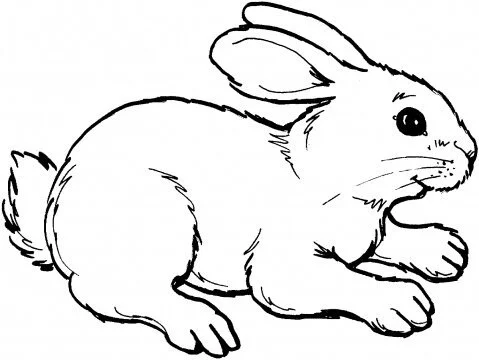One rabbit
At this point in history, anyone with even a passing interest in human health will have heard about the mismatch between our ancient, biological bodies and the radically divergent living conditions we experience in the modern world. According to scientists, this mismatch is responsible for many of our physical, psychological and spiritual afflictions. When we take a close look, it’s easy to see why our bodies and spirits are so thoroughly challenged. First, we live in an alien kinetic environment. That is, we are rarely called upon to move our bodies in any substantial way; most of us simply push a mouse or a steering wheel for a living. Second, we live in an alien nutritional environment. Almost every food we come in contact with has been transformed and adulterated in some way; most of our so-called foods are better described as “edible food-like substances.” Third, we live in an alien social environment. No longer do we live in intimate tribes of 30-100 individuals; we now belong to vast networks of ambiguous relationships. Fourth, we live in an alien sensory environment; we are forced to use our vision, hearing, touch and smell in entirely new ways.
This list of alien qualities represents a formidable challenge to our ability to thrive in the modern world. But this list, as exhaustive as it is, leaves out one very important point. That is, we also live in an alien attentional environment. In a nutshell, this simply means that the modern world challenges our powers of attention in novel ways, ways that our bodies and minds are unprepared for.
Human beings evolved to pay attention to the features and qualities of natural habitat: land, weather, water, plants, animals and other people. Our sensory system, finely tuned over thousands of generations, gave us the capacity to attend to the pace, texture and quality of these elements. But now, our powers of attention are overwhelmed by a tsunami of abstract information, choices, complexity, data smog and cognitive overload. This not only causes us stress, it also sabotages our ability to learn and grow. Of all the mismatches between the human body and the modern world, this is perhaps the most challenging of all.
Many of us tend to underestimate the importance of attention in matters of health and performance. After all, the spotlight of the mind is invisible, weightless and seemingly without consequence. But in fact, attention is essential to everything we are and everything we might become. What we attend to makes a profound difference, not only in the actual structure and tissue of our brains, but also in our behavior, health and life trajectory. When attention becomes fragmented, our power is diluted. This is why the African parable says “A good hunter does not chase two rabbits.”
two_rabbits
The power of attention was brought to light in the 1980’s, beginning with a landmark collaboration of neuroscientists and Buddhist meditators. The Dali Lama, himself an amateur scientist, knew that it was possible to change one’s mind with training. But was it also possible that the activity of the mind could change the structure of brain itself?
This, as it turns out, is precisely the case. Drawing on a series of research studies on both humans and non-human animals, neuroscientists have discovered that the structure and function of the brain can be changed by experience, especially when that experience is guided by focused attention. Attention has real physical consequences for neurons, synapses and hormones, substances with the power to shape our emotions, our stress responses and our longevity.
The stronger our attention to our chosen task, the more profound the effect on the nervous system. Neuroscience confirms our common sense; the harder we try to learn something new, the more completely the body responds. It all comes down to something the neuro-geeks call “attentional density.” In other words, if we want to make progress in some field or discipline, we've got to bring maximum attentional resources to bear on it. The more passionate and intense our attention, the better.
In practical terms, the term attentional density simply means “trying as hard as you possibly can.” Bodybuilders “go to failure,” but other artists and performers stretch themselves too. We concentrate our attention on skill, endurance, sensitivity or execution. We gather our psycho-physical resources, concentrate them in one direction and push the effort to the maximum possible level. And then we rest and do it again.
Unfortunately, our modern environment works against us in this quest. Besieged by relentless, distracting stimuli of all varieties, we struggle to keep our focus; rabbits are everywhere. At first we try to keep up with it all; we begin to hunt two, then three, then four rabbits. Now our attention is moving faster, flicking rapidly from one quality to the next. In the short term, all this means is a little extra effort. But as we add more rabbits to the mix, we become simultaneously more exhausted and less effective; our energy becomes weaker and more diffuse. Over time, our furious rabbit chasing leads to exhaustion, anxiety and depression. Constant distraction dilutes performance and leads us into stress overload, setting ourselves up for disease and unhappiness.
Some of us are up to the challenge, blessed with early childhood training in the art of attending to single tasks. Rigorous training in scholarship, music, art or athletics has given us a solid grounding in focused attention. With work and repetition, we learned how to bring high levels of attentional density to a task, trying as hard as possible, reaping the reward of increased skill, strength and competence. And so, when the find ourselves buried under an avalanche of distractions in the adult world, we have the ability to fight our way through and keep our focus on the single rabbit of our choosing.
But sadly, many young people have never learned to concentrate their attentional energies. Modern schools are notorious for their distracting quality and many kids simply aren’t supported in focused attention practices at home. Unless a child is immersed in some kind of concentrated art, practice or discipline, he or she will never learn how to keep his or her focus on a single task, a single rabbit. This sets her up for a lifetime of distractability, ineffectiveness and frustration.
In any case, most of us need a refresher course in the art of attending to individual rabbits. Classically, this practice is exemplified by mindfulness meditation, in which the student seeks to focus his or her mind ever more completely on the breath in the present moment. In fact, we might even suppose that the Buddha himself would have said that meditation is all about keeping our attention focused on the single rabbit of the present moment. Once we get distracted by the rabbits of past and future, attachment and aversion, we become vulnerable to suffering.
Mindfulness meditation is valuable, not just for its own merits but also because it serves as a model for any art or discipline that we might be inclined to practice, from weight lifting to writing, from endurance running to public speaking. In every case, the path to growth depends on repeated acts of concentrated attention, one rabbit at a time.
Modern neuroscience gives us powerful explanations about the intimate, microscopic details of training and nervous system growth, but it still comes down to ancient wisdom and common sense. To put it simply, work works. The most fundamental element in transformation is attentive effort; concentrated, persistent, focused effort, alternating with periods of authentic rest.
So, when it comes to living in our modern alien attentional environment, it's more important than ever to know the nature of our personal and organizational rabbits. Begin by describing your chosen rabbit in detail; what exactly are you trying to create? What kind of neuroplastic changes would you like to create in your brain, your body and your life? Don’t be vague; be specific. What does your rabbit look like? Feel like? Sound like?
Once you know the nature of your rabbit, focus on it as intensely as you possibly can. Bring maximum attentional density to bear on your chosen task, then rest and repeat. Later, when multiple rabbits begin to appear in your life, it will be easier to make the tough choices without hesitation or paralysis. You’ll know instantly what you’re looking for and you won't be running off into the brush, returning to camp empty-handed.
So remember, even when things get crazy and overwhelming, keep your eye on that wabbit!
rabbit-8-coloring-page

